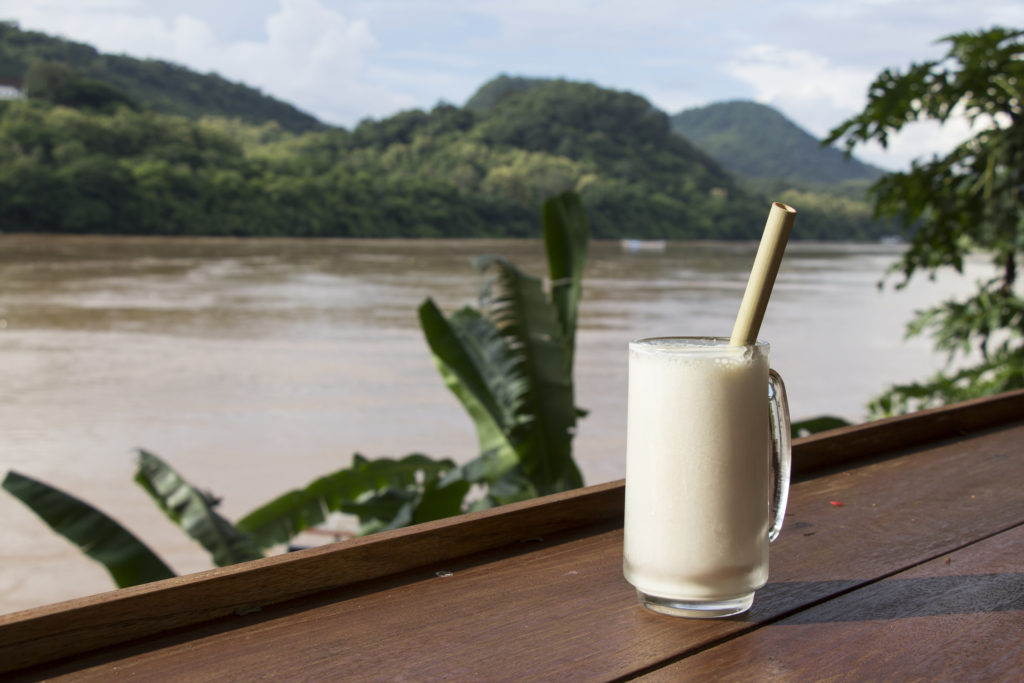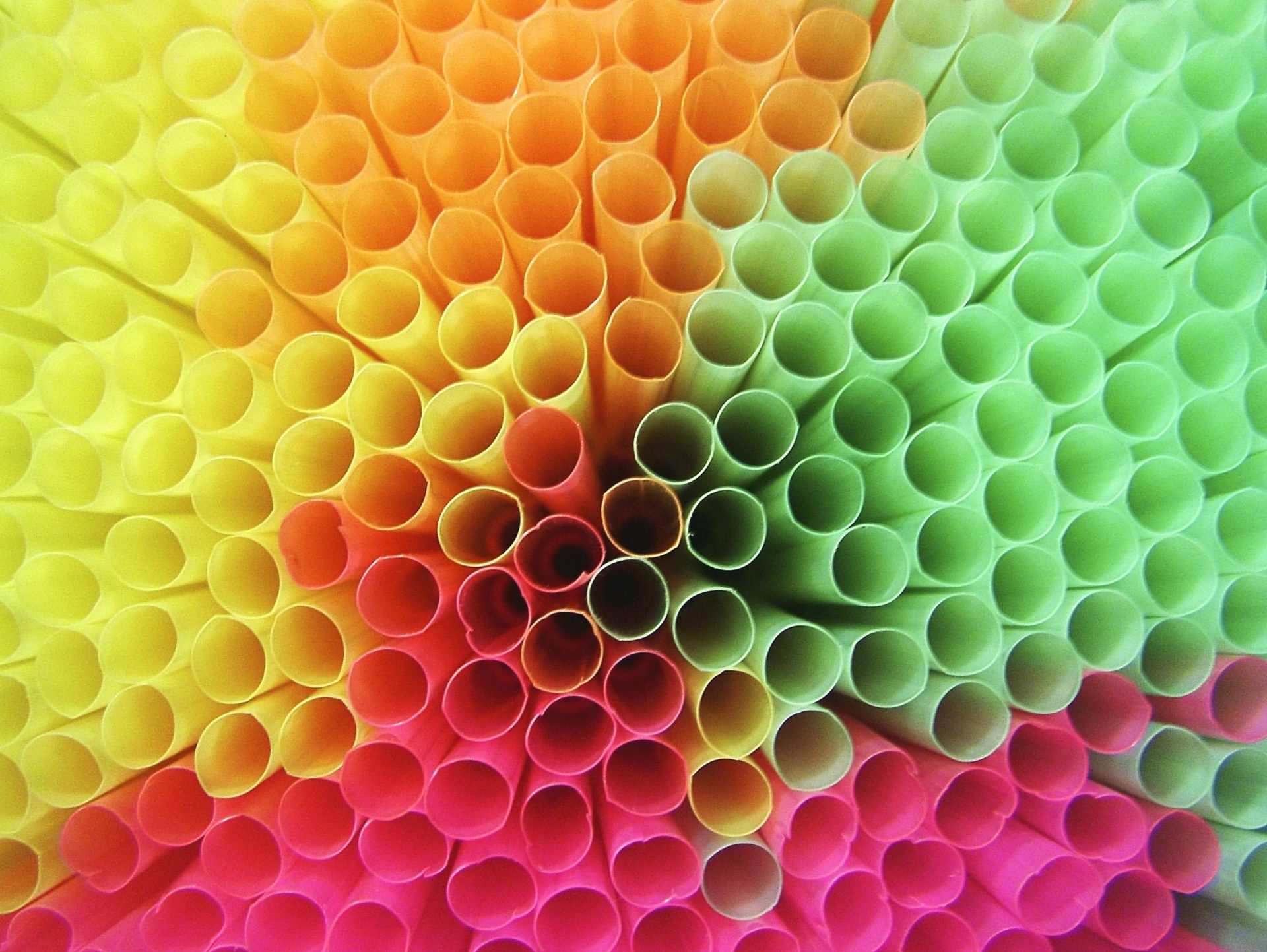Are you annoyed or delighted that straws are being banned in certain cities and states? Here’s a reasonable approach that could satisfy both sides.
I have a confession to make. I am spoiled – I love using straws. They make drinking comfortable; I can drink from cups with a lid on them (so necessary because I spill a lot!)
However, I also hate throwing away perfectly good, usable stuff. This probably comes from my upbringing as a military brat, when American goods (which we cherished) were sometimes hard to come by. It taught us to hoard and to be frugal. So I hate throwing away perfectly good plastic stuff that can be reused. This is also in the fine tradition of our American ancestors. From the time of Benjamin Franklin (waste not, want not), whether we are talking about earlier generations moving westward or surviving depressions, it has always been considered virtuous and wise to live a moderate, and frugal life.
Now there is a movement afoot, and gaining ground, to eliminate straws or require restaurants and fast food places to replace them with paper straws.
Why?
Because there is a lot of waste from straws, right? There is a statistic out there, often cited, that says that we in the US throw away 500 million straws a day. Unfortunately, that statistic was an estimate from a very precocious and passionate 9-year-old who called several straw companies and developed his estimate from that. That equates to 1.6 straws per person per day – I’m sure I have used that much. Other researchers suggest the number is a lot less – only 175 million straws per day. That is still a lot of straws!
Why not?
On the other hand, eliminating straws will not do very much to help the environment. Not that there aren’t straws in the ocean or on the beaches, but the percentage of plastic waste from straws thrown away improperly is extremely small, compared to other sources of plastic waste (one study estimated 3/100% of ocean waste). If you truly want to have an impact on reducing plastic waste in the ocean, you’ll have to do something else. And if you want to do something big, you have to come up with an alternative that is acceptable – big impact, low cost. But that is for another blog post.
Right now, let’s decide if we want to find a reasonable alternative to plastic straws.
Options
Dispose of them properly. We actually have a reasonably good waste management system in this country after there was a major re-design of landfills in the 1970s, making for safer and significantly larger (but fewer) landfills, and recent innovations like waste-to-energy plants. As long as you don’t put your straws in an overflowing trash container outside (especially on the beach), or, heaven forbid, throw them out your car window, straws will not create a serious environmental problem. They are actually a very small part of overall garbage we generate, but if they escape from the proper waste management stream, they can cause unnecessary problems to wildlife. 
No matter your politics, you don’t want to do that when avoiding the problem is so easy. We all love our beautiful seaside and charming wildlife. However, reducing the number of straws from 63 billion/year to something less is also a good thing, and this option, while a necessary and important first step, does not work on that goal. Overall reduction of straws: 0
Reuse, when possible. This is so easy – you get to enjoy the straw while reducing waste. I drink unsweet ice tea, so I can retrieve my straw, keep it on the center console of my car until my next ice tea, and wave it at the fast food place so they don’t give me a new one. My husband drinks iced coffee, and does the same thing. When you take the drink inside, rinse out the straw often enough so funky bacteria doesn’t grow in the straw. Eventually, the straws start to split, so you then need to dispose of them properly. Reduction of straws: for me, using 1 straw/3 days, when I drink about 4 ice teas/day, approximately 125 rather than 1500 plastic straws/year. Add the same number for my husband. Total reduction: 2750 plastic straws/year. Note: this doesn’t work very well if you drink milk or milkshakes without frequent rinsing.
Paper straws have a distinct advantage of being biodegradable. In areas where plastic straws are banned, many companies are switching to paper straws. The ones I have purchased through Amazon are pretty solid. If you keep them rather than throwing them away, they can be reused several times, but I have not done a scientific comparison of paper straws to plastic straws. The disadvantage are that some have a slight paper taste (and use trees) and they are significantly more expensive than plastic straws. Most food establishments operate on a fairly narrow margin and will have to pass along the costs to you – maybe not a huge amount, but it adds up if every solution costs more (about 3 cents more). Ideally, we want solutions that cost less and create less waste. If you buy them yourself to carry with you, get the ones that aren’t individually wrapped. Of course, restaurants and fast food places have to use individually wrapped straws for hygienic reasons. Total reduction of plastic straws: 3000/year for the two of us. Total reduction of straws: 0.
Glass and steel straws. These are a highly recommended option from the environmentalists because they can be used indefinitely. I personally don’t like the feel of either glass or steel because they have no give (like plastic does) and feel cold, hard, and thicker than plastic, but you can try either or both to see what you think. I bought some, but haven’t been inclined to use them after the first few days. Total reduction of plastic straws: 3000/year for the two of us, if we bother to use them.
Bamboo straws. Now, besides reuse, this is my favorite option, and is the most sustainable, because bamboo is a rapidly renewable resource (i.e., it grows very rapidly, and is harvested in less than 10 years). 
Bamboo straws, to me, have a warmer feel, and are . They are also thicker than plastic, and so have a different feel, but I was able to get accustomed to them by the second day. They are also lovely to look at. I leave one handy by my easy chair and another in my car. I have not had to throw one away since I started using them, but bamboo lasts for years in furniture and construction, so I think they will last quite a while. Again, this is not a scientific study, but I will let you know if they start falling apart. Total reduction of plastic straws: 3000/year for the two of us – and they are pleasant to use.
So, do something rational
The best solutions can be a combination of solutions. I choose to do three things, and it is what I commend to you.
Be careful – dispose of the straws you use so that they don’t litter.
Reuse – don’t throw your straws away automatically … keep one or two straws in your car to use the next time you get a drive-through drink. They’ll last for days!
Try bamboo – they’re warm, beautiful and long-lasting, and you can take them wherever you go (be sure to wash them out periodically).
References
Hamm, T. (2018) The Wisdom of Frugality: What Is Simplicity? https://www.thesimpledollar.com/the-wisdom-of-frugality-what-is-simplicity/
Langone, A. (July 23, 2018). No One Knew How Many Plastic Straws Americans Use Every Day. Then a 9-Year-Old Kid Did the Math. Money.com. Retrieved from: http://money.com/money/5343736/how-many-plastic-straws-used-every-day/
National Park Service (Last updated: July 18, 2018). The Be Straw Free Campaign. Retrieved from: https://www.nps.gov/articles/straw-free.htm
Sabo, M. (2017). The American Founders Knew A Virtuous Republic Requires Virtuous People. http://thefederalist.com/2017/04/28/the-american-founders-knew-a-virtuous-republic-requires-virtuous-people/
Stossel, J. (2018). Plastic Straw Myths. Reason.com. Retrieved from: https://reason.com/reasontv/2018/07/17/plastic-straw-myths
Viswanathan, R. (2018) Why Starbucks, Disney, and the EU are all shunning plastic straws: Banning plastic straws won’t save the ocean. But we should do it anyway. https://www.vox.com/2018/6/25/17488336/plastic-straw-ban-ocean-pollution
Zimlich, R. (2015) Regional Landfill Capacity Problems Do Not Equate to a National Shortage. https://www.waste360.com/operations/regional-landfill-capacity-problems-do-not-equate-national-shortage
